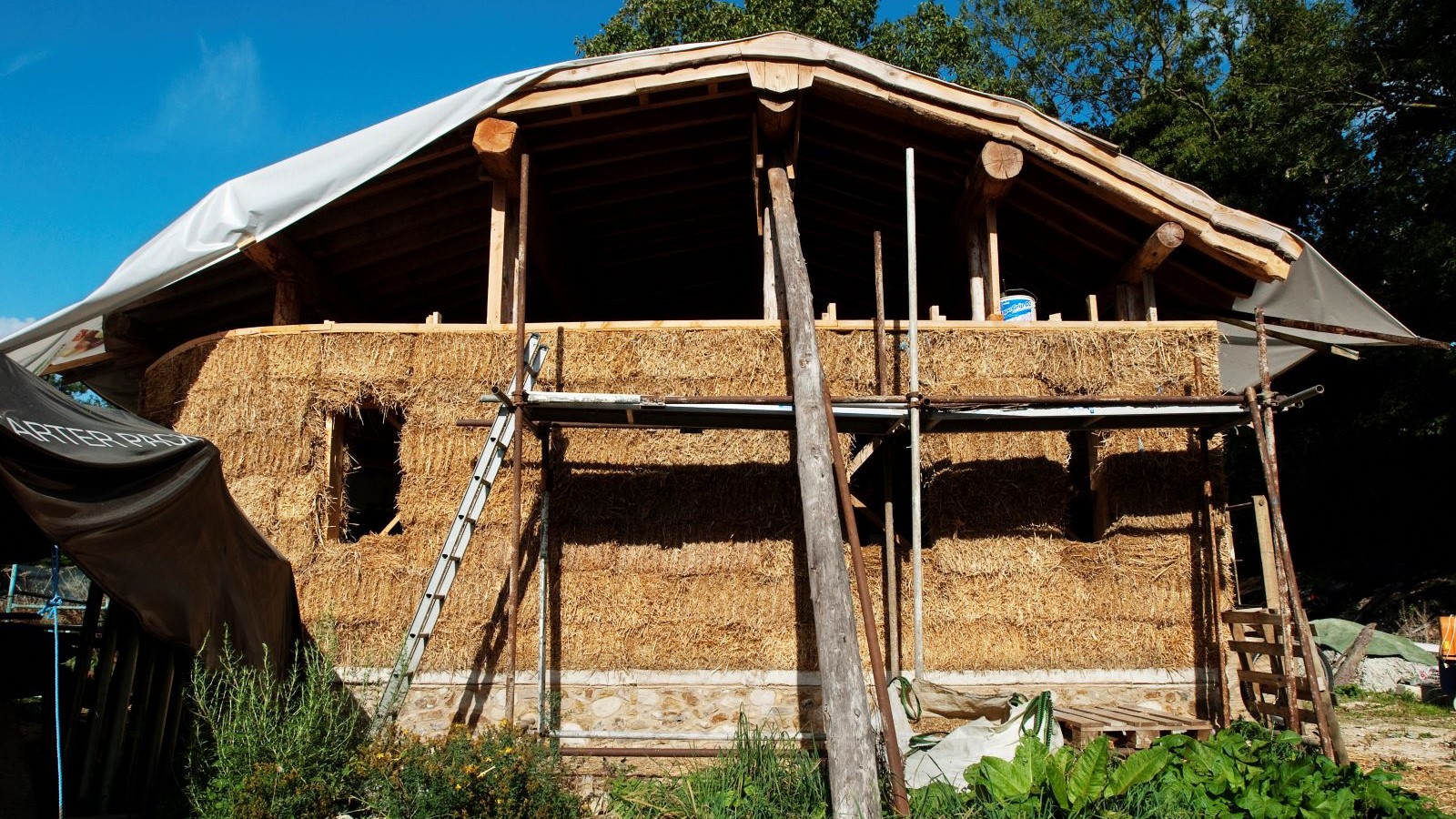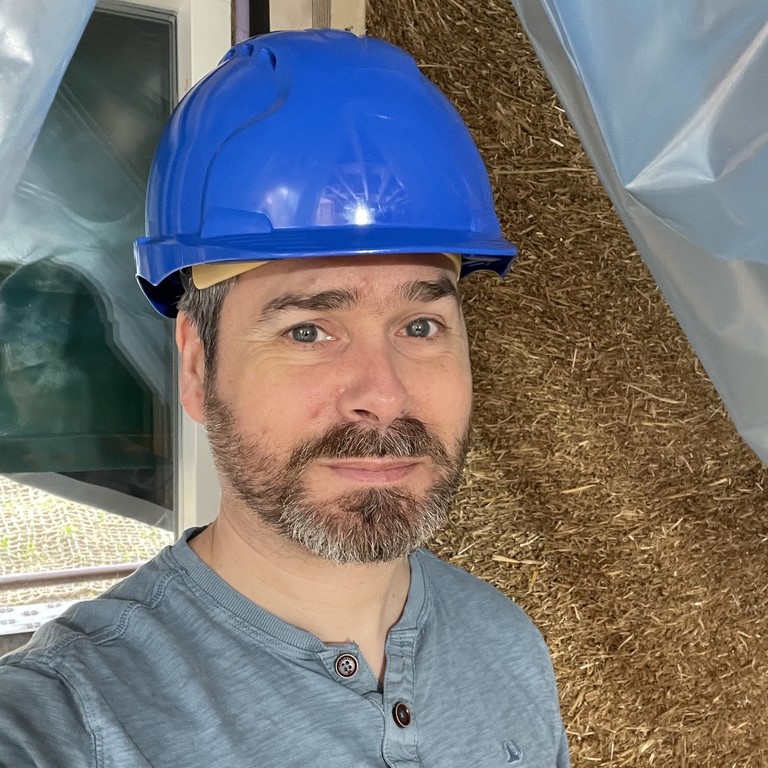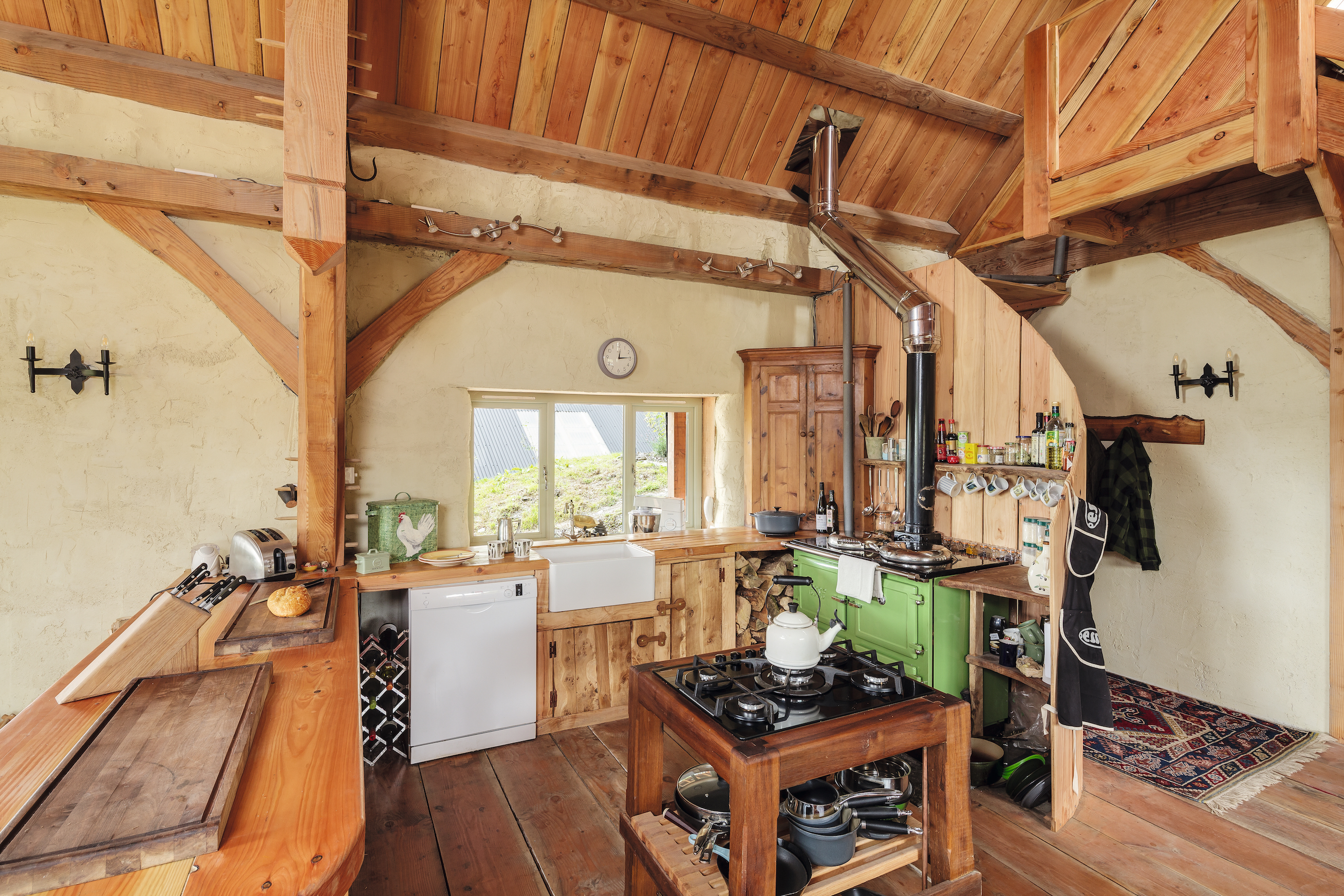Straw bale insulation: Pros and cons of using this eco-friendly option in your build
If you're looking for environmentally-friendly insulation, construction-grade straw bales are a great option. Not only are these cheap but densely-packed straw is fantastic at keeping heat in too

Straw bale insulation is an excellent form of material that can be used as an alternative to other more conventional types of insulation such as rockwool, cellulose or fibreglass.
One of the major benefits is that straw bales are cheaper than these materials and, sometimes, can be obtained from local farmers for free, as well as from specialist suppliers at a reasonable price.
They are also environmentally-friendly and fire-resistant (due to being tightly packed), although one slight downside is that they must be kept free of moisture in order to prevent rot and deterioration.
What is straw bale insulation?
Straw consists of the remaining stalks from harvested crops, tied with string into bales, which usually measure 990mm × 500mm × 375mm in the UK. Farmers sometimes plough straw back into the ground as a soil conditioner, but it can also be burnt, which is not so friendly to the environment.
Since the 19th century, straw bales have been used as a natural insulation that is environmentally-friendly (especially if using them stops them being burned instead) and recyclable. It can be used in attics, ceilings and walls and is especially suitable for timber-framed buildings.
“Straw is an ideal low-carbon insulation material” says Certified Passivhaus Consultant John Butler. “Straw stores around 129 kg of CO₂ per cubic metre at the densities used in construction. That carbon has been absorbed in a single growing season, and remains usefully removed from the atmosphere while stored in a building (if the straw had been left to decompose, or incinerated, then all that carbon would have been released).
"Straw insulation tends to be used either in bale form or as full-fill in timber frame (or prefab panels). In combination with the lightweight timber frame, densely packed straw can bring additional structure, helping reduce the size of timbers needed and achieving excellent thermal insulation by filling the whole depth of a wall.”
Bring your dream home to life with expert advice, how to guides and design inspiration. Sign up for our newsletter and get two free tickets to a Homebuilding & Renovating Show near you.

John Butler is a Certified Passivhaus Consultant and geek for hire, and sits on the voluntary board of Straw-bale Building UK (SBUK) - the UK association and information hub for practitioners, designers, trainers and enthusiasts for straw building.
Pros of straw bale insulation
Straw bales are an excellent option for eco insulation and, when protected from moisture, can last for decades without any noticeable decomposition. The pros include:
- Excellent insulation properties - when it comes to thermal resistance, straw bales typically have an R-value of 2.38 per inch to R 0.94 per inch, which is just as good as stone, wool or fibreglass for retaining heat. Straw's thermal resistance can be increased even further by tightly packing the bales
- Long-lasting - when properly protected from moisture
- Lightweight - therefore exert minimum impact on building foundations
- Environmentally friendly - any waste material from straw bale insulation is totally biodegradable - there is no adverse impact on food production or livestock
- Low-cost, locally sourced and sometimes free - straw bale insulation is often cheaper than other materials and farmers are sometimes willing to dispose of them for free when clearing out their barns
- Cuts to shape easily and can be made into prefabricated straw insulation panels - the skills needed to turn straw into prefabricated insulation panels are fairly basic and can be learned quickly, especially by those with some existing knowledge of carpentry
Straw bales' robustness also depends, to some degree, on their binding, which ideally should be polypropylene or other twine that is non-degrading.
Ideally, the density of the straw bales should be at least 110 kg/m3, as this increases robustness when transporting them and increases their stability and fire resistance.
“Contrary to what some people imagine, straw wall systems (whether manual bale builds or timber-frame straw prefab panels) have regularly exceeded fire resistance tests, producing results well in excess of UK building regulations requirements (typically containing fire on one side for the duration of the test, leading to fire rating of 120 minutes for a number of straw building systems),” adds John Butler.
“Like all good construction, careful detailing of building junctions is important, but straw in construction has proven to be long lasting. The oldest known straw-insulated building in Europe is 124 years old.”

Cons of straw bale insulation
Straw bales are an agricultural by-product. They therefore have certain limitations that can be problematic when using them as an insulation material. These include factors such as density, dimensions and moisture content.
With regards to moisture, this necessitates the observance of careful detailing around windows and doors in order to protect the bales from moisture ingress. It also means that repair can also be problematic when it comes to flood damage, or if the insulation is used in load bearing walls. Furthermore, the use of straw bales as insulation is limited to those areas above the damp-proof course.
Straw bales used for the purpose of insulating a wall need to be protected by a well overhung roof in order to protect the render from driving rain and penetrations, and the walls need to be constructed in such a manner that they do not allow the build up of moisture.
There are also measures that need to be taken to prevent thermal bridging and cold zones developing within the straw that may allow already present water vapour to condense.
Ways of preventing this include avoiding the use of metal frames or fixings where possible, or by wrapping them in sackcloth to prevent contact between them and the straw.
Is straw bale insulation compliant with building regs?
The fire rating of straw bale insulation is compliant with building regulations, particularly given that this method of construction provides a virtually airless environment. Subsequently, it more than meets the requirements of airtightness in a build.
More specifically, the external surface of walls containing straw bales need to be compliant with standard BS EN 13501-1:2018, although in fire tests, clay and lime plastered straw bale systems have proven to exceed the demands of this standard.
Where can I buy straw bale insulation?
You can usually buy straw bales for construction projects from special suppliers selling construction-grade bales. These suppliers tend to be covered by a specific trade association – the British Hay & Straw Merchants Association (BHSMA) – a quick Google search with the search term “straw and hay merchants” will usually bring up a list of suppliers in your area.
Other suppliers include local horse and equestrian interests and local dairy farmers.
“If just 5 percent of the straw sold away from its farm of origin were used for building, we could build just shy of 40000 3-bed semi-detached houses a year in the UK (based on 10 year average yield and use data from UK Government statistics)” explains John.
“With increasing panelised timber build systems making straw construction more accessible to general construction, we should be using a lot more of it than we currently do in the UK.”
More info on the technical capabilities and requirements of straw construction is available in the Straw Construction in the UK Technical Guide.
If you are still researching options on how to insulate your house and want to look at more types of environmentally-friendly insulation, it is worth considering sheep wool insulation as well as wood fibre insulation, hemp or cork.

Robin is a freelance journalist based in the South West of England, UK. He specialises in environmental issues, climate change and renewable energy, with other interests in transport and green motoring. He is a regular daily correspondent for a renewable energy website, writing news articles and interview pieces on all the main clean energy technologies. He has also written widely for numerous magazines on these topics, as well as writing white papers and web content.
